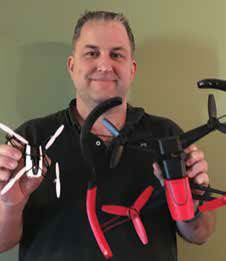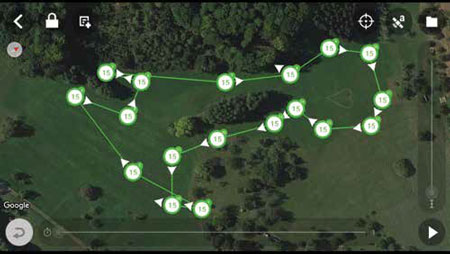DRONES: THESE CLASSES FLY BY

When it comes to tech, Bobby Brian Lewis of Huntington Middle School in Warner Robbins (GA) is flying high. Ever the early adopter, the PBS Digital Innovator jumps into tech with the gusto of one in a million teachers. (Literally. He was named Edmodo Ambassador of the Year.) So when drones hovered into the education scene, Lewis grabbed a controller and never looked back.
TL: How did you first get involved and become an edu drone instructor?
BOBBY BRIAN LEWIS: I started teaching 20 years ago and was always seeking new technology to help reach struggling students. Students love learning about new technology (whether it’s interactive boards, iPads, gamification, augmented reality, etc.), so drones were the next step to enhance instruction. I strive to stay on the cusp of new technology all the time.
TL: What sort of interesting projects have you seen utilizing drones? Is there any crossover to subjects beyond tech?
BBL: Tech concepts are obvious. You can create flight plans or write code for your drone to complete. Drones can also teach math concepts—calculating the speed (mph) of a drone by measuring the distance from light pole to light pole then recording the time it takes your drone to travel that distance, or writing equations to determine how much weight a drone can carry. Science is another fit—exploring Newton’s laws, Bernoulli’s principle, aerial design principles, using solar means to power batteries. Besides direct scientific experiments, the drones can be used to watch wildlife in their natural environment or to safely observe the aftereffects of weather phenomena like earthquake or tornado damage. You could even use footage from the video captured during a flight to spark creative writing assignments, or incorporate video-and photography-by-drone into an art curriculum.
TL: Are the costs of the drones prohibitive for schools? Are there a lot of maintenance and repair costs involved?

BBL: The average cost of a mini-drone, the size of your hand, is $99. Most are very sturdy and can be repaired easily (and come with replacement parts such as propellers). These can be flown inside without registering the drone with the FAA. Really nice, bigger drones run from $300–$1,000 dollars, but prices are coming down. They must be registered with the FAA.
Tools and ideas to transform education. Sign up below.
TL: Drones don’t get the best press—do you get any pushback because of this?
BBL: Teachers need to teach students about digital safety and privacy. Using this technology offers a great opportunity to address the ethics involved with posting video of people you might record or invading someone’s sense of privacy.
TL: Are students excited by the incorporation of this tech into their classes?
BBL: Teachers and students love cutting-edge technology like drones. They’re the hot topic now in society, and students love to interact with real-life problems. Drones help motivate struggling students and those who best respond to hands-on learning.
TL: What do you see as the future of this tech in education?
BBL: I imagine teachers will start receiving professional development on the benefits of learning with this tech and on how to pilot a drone. This technology will become easier to buy and fly in the future, and soon drones will help us to see new possibilities for education.
Sascha has nearly two decades of experience as a freelance journalist writing for national magazines, including The Washington Post, LA Times, Christian Science Monitor, National Geographic Traveler, and others. She writes about education, travel and culinary topics.

